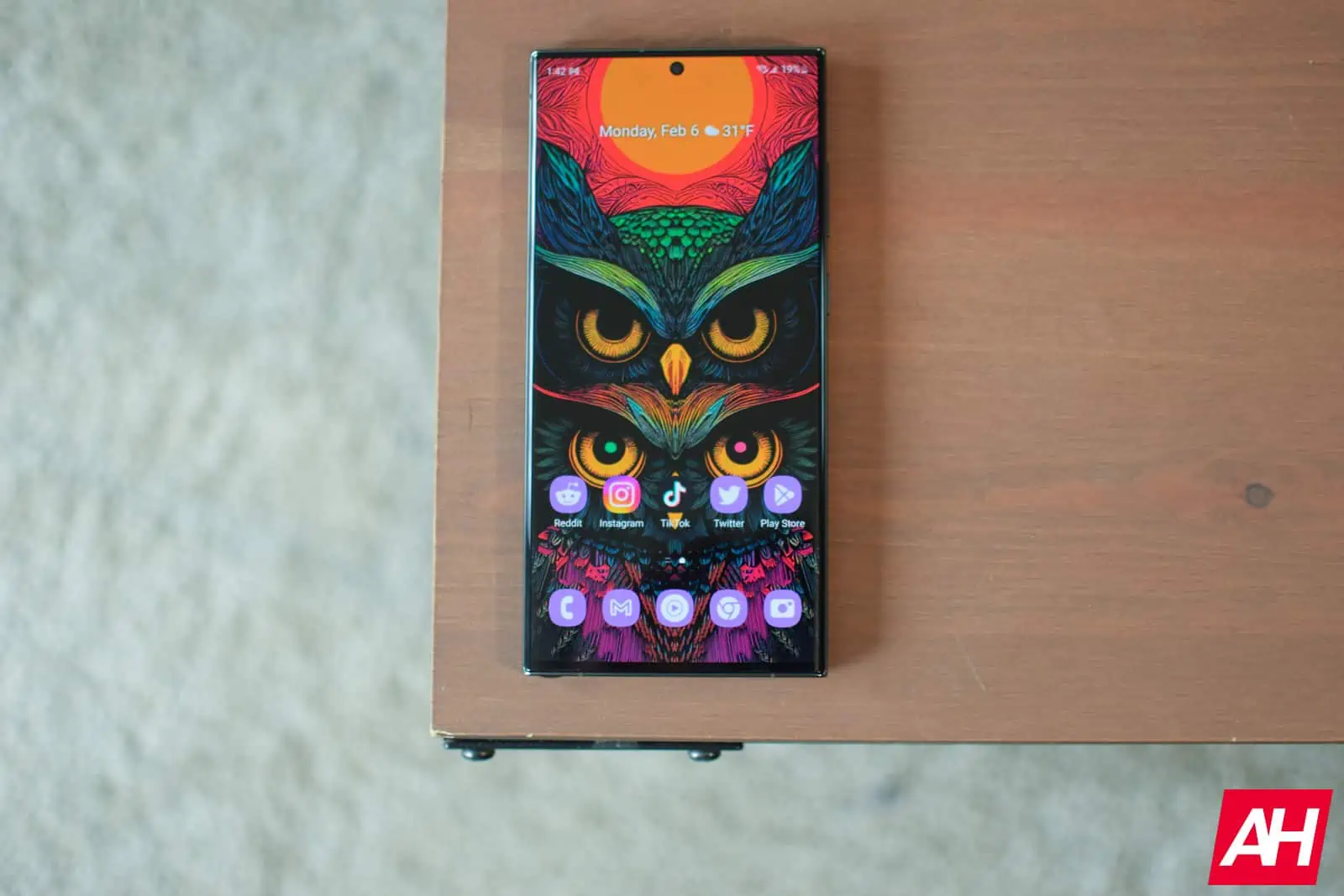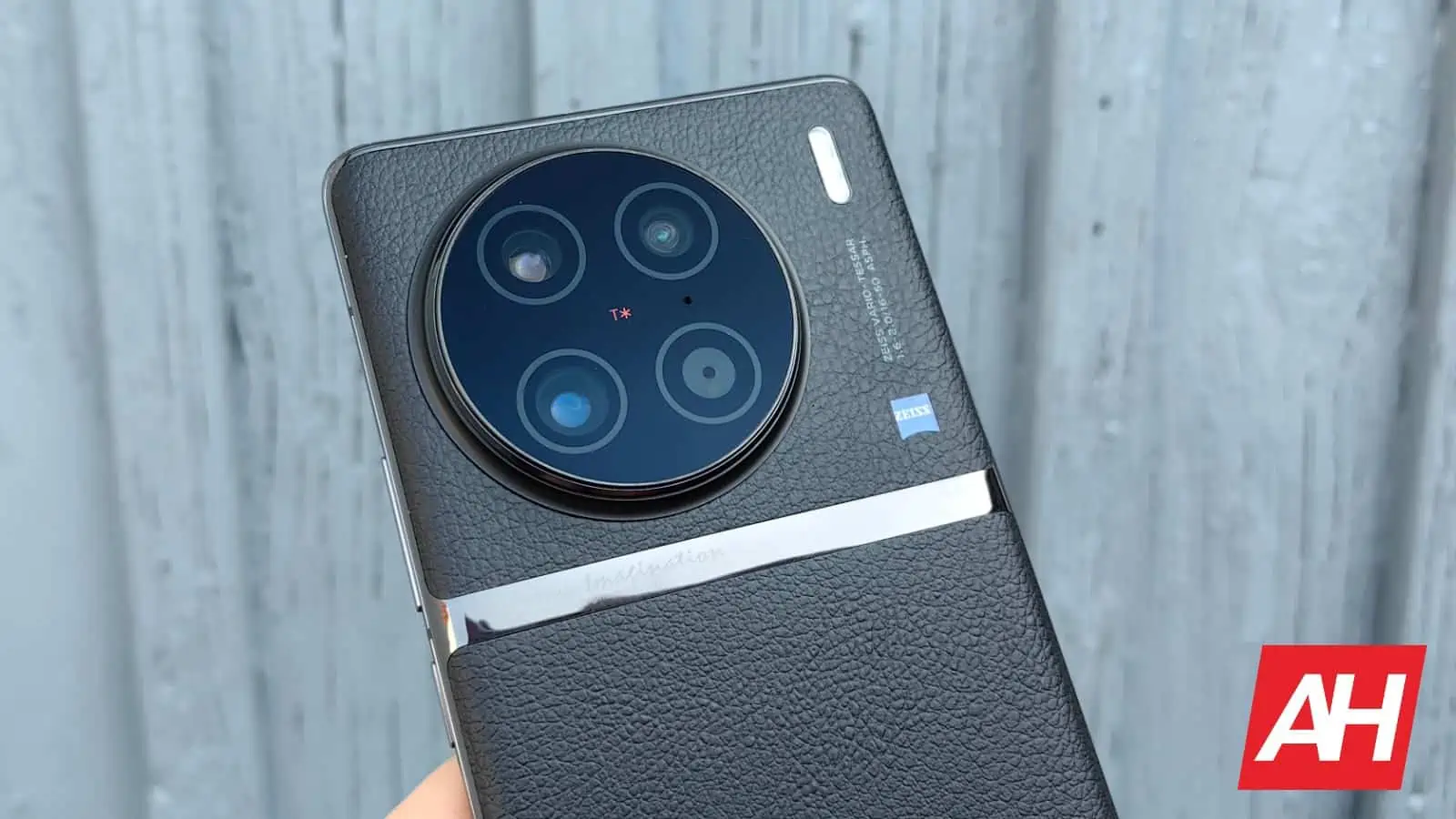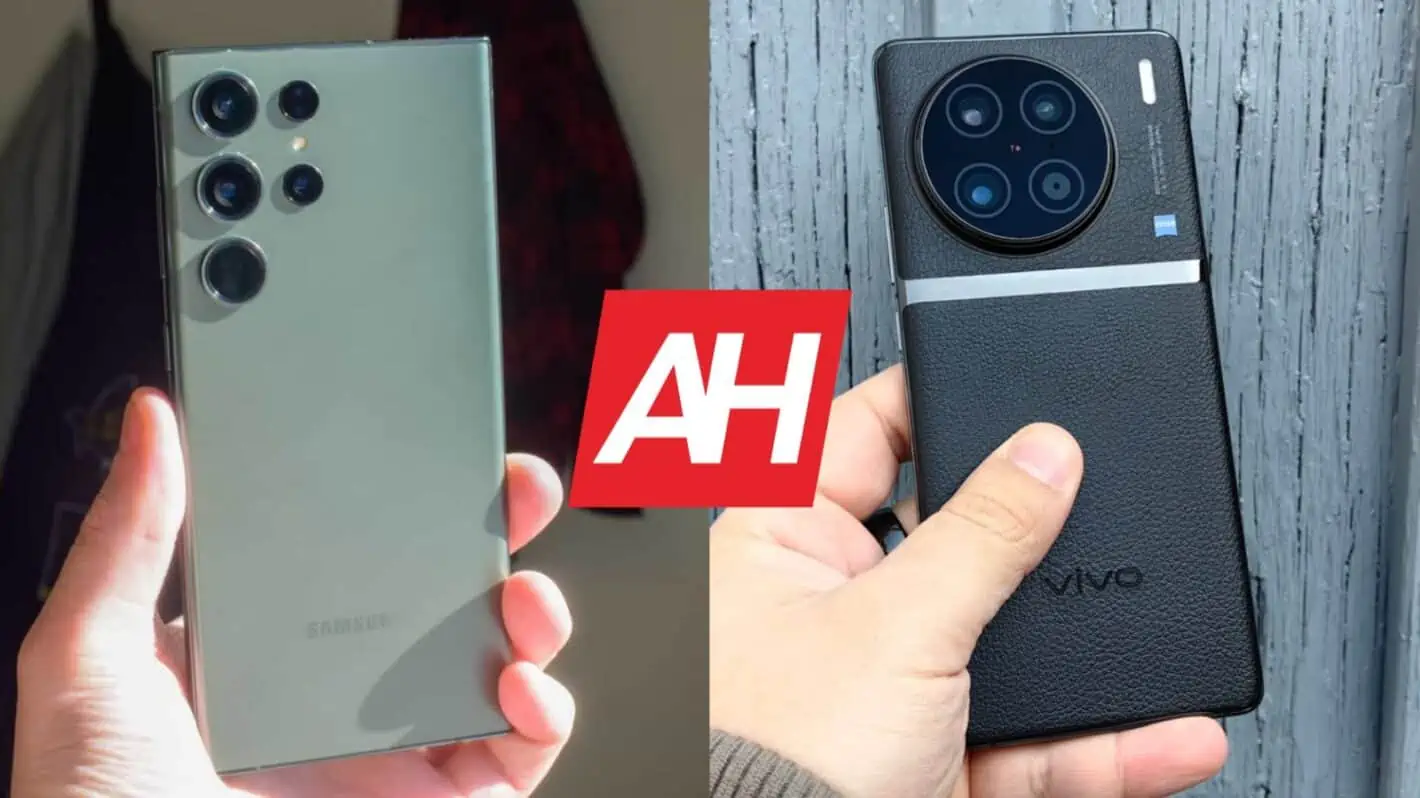The Galaxy S23 Ultra launched with much-improved camera performance compared to its predecessor. In this article, we’ll compare it with one of the best camera smartphones out there. We’ll compare the Samsung Galaxy S23 Ultra vs Vivo X90 Pro. The Vivo X90 Pro originally launched in November last year, but its global model arrived quite recently. So, these are basically two brand new handsets.
They do focus a lot on the camera department, but that’s not all they have to offer, not at all. They’re actually really good in basically all aspects, but also quite different at the same time. We’ll first list their specifications, and will then move to compare them across a number of other categories. Having said that, let’s get this comparison underway, shall we?
Specs
| Samsung Galaxy S23 Ultra | Vivo X90 Pro | |
| Screen size | 6.8-inch QHD+ Dynamic AMOLED 2X display (curved, 120Hz adaptive refresh rate, LTPO, down to 1Hz, 1,750 nits peak brightness) | 6.78-inch AMOLED display (120Hz refresh rate, curved, 1,300 nits peak brightness, LTPO) |
| Screen resolution | 3080 x 1440 | 2800 x 1260 |
| SoC | Qualcomm Snapdragon 8 Gen 2 for Galaxy | MediaTek Dimensity 9200 |
| RAM | 8GB/12GB (LPDDR5X) | 12GB (LPDDR5X) |
| Storage | 256GB/512GB/1TB, non-expandable (UFS 4.0) | 256GB, non-expandable (UFS 4.0) |
| Rear cameras | 200MP (f/1.7 aperture, 24mm lens, 0.6um pixel size, multi-directional PDAF, Laser AF, OIS) 12MP (ultrawide, Dual Pixel AF, 120-degree FoV, f/2.2 aperture, 1.4um pixel size) 10MP (telephoto, Dual Pixel AF, OIS, f/2.4 aperture, 1.12um pixel size, 70mm lens, optical zoom 3x) 10MP (telephoto, Dual Pixel AF, OIS, f/4.9 aperture, 1.22um pixel size, 230mm lens, 10x optical zoom, 100x Space Zoom) |
50.3MP (f/1.8 aperture, 23mm lens, 1.6um pixel size, Dual Pixel PDAF, OIS) 12MP (ultrawide, f/2.0 aperture, 108-degree FoV) 50MP (f/1.6 aperture, 50mm lens, 0.7um pixel size, 2x optical zoom, OIS) |
| Front cameras | 12MP (f/2.2 aperture, 26mm lens, Dual Pixel PDAF) | 32MP (f/2.5 aperture, 24mm lens, 0.8um pixel size) |
| Battery | 5,000mAh, non-removable, 45W wired charging, 15W Qi wireless charging, 4.5W Wireless PowerShare Charger not included |
4,870mAh, non-removable, 120W wired charging, 50W wireless charging, reverse wired charging Charger included |
| Dimensions | 163.4 x 78.1 x 8.9mm | 164.1 x 74.5 x 9.3mm |
| Weight | 234 grams | 214.9 grams |
| Connectivity | 5G, LTE, NFC, Bluetooth 5.3, Wi-Fi, USB Type-C | 5G, LTE, NFC, Bluetooth 5.3, Wi-Fi, USB Type-C |
| Security | In-display fingerprint scanner (ultrasonic) | Facial scanning (front camera) In-display fingerprint scanner (optical) |
| OS | Android 13 One UI 5.1 |
Android 13 Funtouch 13 |
| Price | $1,199.99/$1,299/$1,399/N/A (1TB) | N/A |
| Buy | Samsung | Vivo |
Samsung Galaxy S23 Ultra vs Vivo X90 Pro: Design
The Samsung Galaxy S23 Ultra is made out of metal and glass, while the global VIvo X90 Pro model combines metal and vegan leather. Both devices are quite large, but they have an entirely different in-hand feel, and look different as well. The Galaxy S23 Ultra has flat top and bottom sides, with curved sides, but less curved than on the Galaxy S22 Ultra. The Vivo X90 Pro has a rather familiar design, in which the frame is thinner on the side as both the front and bottom sides curve into it. Its corners are rounded, unlike the ones on the Galaxy S23 Ultra.
Both smartphones have a centered display camera hole, and curved displays. The display on the Vivo X90 Pro is considerably more curved than the panel on the Galaxy S23 Ultra, though. The bezels are quite thin on both phones. If we flip the two phones around, you’ll notice the differences in their rear camera design. The Galaxy S23 Ultra has four cameras, each of which protrudes from the backplate on its own. The Vivo X90 Pro has three cameras, all of which sit inside a huge circular camera island.
The Galaxy S23 Ultra also has an S Pen silo with a stylus in the bottom-left corner. Both phones include physical buttons only on the right-hand side. They are almost equally tall, while the Galaxy S23 Ultra is noticeably wider. The thickness is quite similar as well, while the Galaxy S23 Ultra is noticeably heavier, it’s about 20 grams heavier. It weighs 234 grams compared to 214.9 grams of the Vivo X90 Pro. Both phones feel immensely premium in the hand, though, but the Vivo X90 Pro is less slippery, mainly due to its vegan leather backplate.
Samsung Galaxy S23 Ultra vs Vivo X90 Pro: Display
A 6.8-inch QHD+ (3088 x 1440) Dynamic AMOLED 2X display sits on the front side of the Galaxy S23 Ultra. That panel is curved, and it has a 120Hz refresh rate. HDR10+ content is supported, and the panel does get quite bright at 1,750 nist of peak brightness. The Gorilla Glass Victus 2 protects this display, while the screen-to-body ratio is quite high (slightly lower than on the Vivo X90 Pro).

The Vivo X90 Pro features a 6.78-inch 2800 x 1260 AMOLED display. This display is also curved, and more curved than the Galaxy S23 Ultra panel. It has a 120Hz refresh rate, and that refresh rate is adaptive, as is on the Galaxy S23 Ultra. HDR10+ content is supported, while this panel can project up to 1 billion colors. It gets up to 1,300 nits of peak brightness, and we’re looking at a 20:9 display aspect ratio here.
Both sets of displays are excellent, even though the Galaxy S23 Ultra does look better on paper. Truth be said, if you’re not nitpicking, you’ll be more than happy with both panels. They’re both very sharp, offer excellent optimizations, and are extremely smooth. The colors are vivid, and the blacks are deep. The viewing angles are also really good, though the Vivo X90 Pro’s display does have reflections on the side due to the curved. One major advantage of the Galaxy S23 Ultra’s panel is its brightness. If you spend a lot of time in direct sunlight, that is something you should consider.
Samsung Galaxy S23 Ultra vs Vivo X90 Pro: Performance
The Snapdragon 8 Gen 2 for Galaxy SoC fuels the Galaxy S23 Ultra. That is basically the Snapdragon 8 Gen 2, but with some tweaks, including higher clock speed. Samsung also included 12GB of LPDDR5X RAM inside the Galaxy S23 Ultra, along with UFS 4.0 flash storage. The Vivo X90 Pro is fueled by the MediaTek Dimensity 9200 SoC, and it comes with 12GB of LPDDR5X RAM. UFS 4.0 flash storage is also included.
Now, on paper, the Snapdragon 8 Gen 2 is the more powerful SoC, even though the MediaTek Dimensity 9200 is a premium, top-of-the-line chip as well. You won’t really notice the difference in sheer power during usage, though, and that goes for games as well. Both phones simply glide through everything you throw at them, and that goes for the most demanding games you can find in the Play Store. They’ll both get warm, but the performance won’t be affected in any way. Getting them to lag is a chore indeed.
One thing where the Snapdragon 8 Gen 2 does have an advantage is power consumption, but that’s something we’ll talk about in the next chapter. As far as performance is concerned, both of these phones are outstanding.
Samsung Galaxy S23 Ultra vs Vivo X90 Pro: Battery
The Galaxy S23 Ultra comes with a 5,000mAh battery, while the Vivo X90 Pro has a 4,870mAh battery. The Snapdragon 8 Gen 2 is better with power consumption than the MediaTek Dimensity 9200. The Vivo X90 Pro doesn’t have bad battery life, quite the contrary, but it cannot match up to the Galaxy S23 Ultra.
The Galaxy S23 Ultra battery life is… well, crazy. Getting to the 9-hour screen-on-time on the phone is entirely possible, we even managed to cross the 10-hour screen-on-time mark on several occasions. The Vivo X90 Pro, on the other hand, can go across the 6-hour screen-on-time mark with some juice left in the tank. We’re still testing the Vivo X90 Pro, so you’ll find out more in our full review. We can already see that the difference in durability is quite considerable.
When charging is concerned, the opposite applies. The Vivo X90 Pro simply crushes the Galaxy S23 Ultra. It offers 120W wired, 50W wireless, and also 5W reverse wired charging. On top of that, the charger is included in the box, which is not something we can say for the Galaxy S23 Ultra. Samsung’s flagship offers 45W wired, 15W wireless, and 4.5W reverse wireless charging.
Samsung Galaxy S23 Ultra vs Vivo X90 Pro: Cameras
First and foremost, let me just say that both of these phones offer outstanding camera performance. They offer different results, but outstanding nonetheless. The Galaxy S23 Ultra includes a 200-megapixel main camera, along with a 12-megapixel ultrawide unit, a 10-megapixel telephoto camera (3x optical zoom), and a 10-megapixel periscope telephoto unit (100x Space Zoom). The Vivo X90 Pro is equipped with a 50.3-megapixel 1-inch main camera sensor, a 12-megapixel ultrawide camera, and a 50-megapixel telephoto unit (2x optical zoom).

The shots from the Vivo X90 Pro will look closer to something you’d get from a DSLR, in terms of style. You get that creamy bokeh effect. Because of that, you’ll also need to learn how to handle this camera, as it does take a bit of getting used to, simply due to the size of that sensor. The Galaxy S23 Ultra balances images brilliantly, and offers a ton of detail. Both phones handle dynamic range with grace, and offer outstanding low light performance too. ZEISS’ T* coating on the Vivo X90 Pro handles light reflections like a champ, while the Galaxy S23 Ultra does great in HDR situations.
Ultrawide cameras on both phones are quite good, and follow the main cameras in terms of style. The Galaxy S23 Ultra’s unit does offer a wider field of view, which proved to be more useful most of the time. When it comes to telephoto/periscope shots, the Galaxy S23 Ultra is the clear winner. The Vivo X90 Pro is quite limited in that regard, as it doesn’t have the periscope camera from the VIvo X90 Pro+ (launched in China only). The Galaxy S23 Ultra does have a slight edge in video recording, mainly due to outstanding stabilization, but both are quite good in that regard.
Audio
There is a pair of stereo speakers on each of these two devices. Those speakers are really good on both phones, but the Galaxy S23 Ultra does have a slight advantage when it comes to bass and depth. It’s not something many people will notice, though. Both sets of speakers also get quite loud, and Samsung’s are tuned by AKG.
What you will not find on either phone is a 3.5mm headphone jack. You’ll have to utilize a Type-C port if you want to establish a wired audio connection. If not, there’s always Bluetooth 5.3 support which is available on both of these phones.

